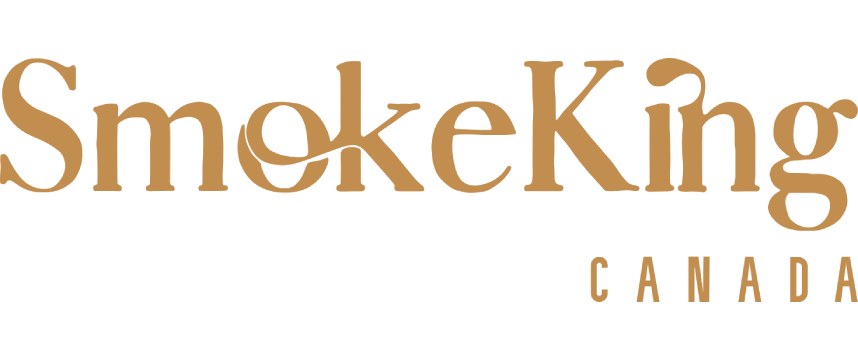Walking into a Canadian tobacco shop can feel pretty overwhelming these days. You’ve got rows of different cigarette brands, each claiming to be different from the next. Whether you’re looking for Canadian full cigarettes, trying to find light cigarettes in Canada, or wondering about the status of menthol cigarettes Canada once offered, the market has changed quite a bit over the years. Let’s break down what’s actually available in the Canadian cigarette market today and help you understand the differences between each type.
What Are the Main Types of Cigarettes in Canada?
If you’re trying to make sense of all the options on Canadian shelves, you’re not alone. The types of cigarettes in Canada basically fall into several distinct categories, each with its own characteristics and target market.
Comparison Table of Cigarette Types
| Type | Tar Content | Nicotine | Brand Level | Market Share | Popular Brands | Price Range (CAD) | Target Users |
|---|---|---|---|---|---|---|---|
| Full Flavor | Varies; Canada doesn’t use “tar” numbers to define strength | Varies by brand | Premium/Standard | Not officially published | Player’s, Export A | ~$15–$20/pack (province-dependent) | Traditional smokers |
| Light | Lower machine-measured yields via filter ventilation; exact values vary | Varies (ventilated filters dilute smoke) | Premium/Standard | Not officially published | du Maurier, Belmont | ~$15–$20/pack (province-dependent) | Health-conscious smokers |
| Ultra Light | Lowest machine-measured yields; values vary by product | Varies by product | Premium | Not officially published | Matinée, Vogue | ~$15–$20/pack (province-dependent) | Transition smokers |
| Native Smokes | Varies | Varies | Economy | No official estimate | DK’s, Putters | Often lower than mainstream taxed prices; varies by community/eligibility | Budget-conscious buyers |
Understanding the Table
Looking at these numbers, public sources in Canada don’t report market share by “light/full/ultra-light” (these descriptors are restricted), and average retail prices generally fall around $15–$20 per pack depending on the province. Native smokes Canada produces have carved out their own niche, mainly because of that price difference linked to distinct tax treatment on-reserve for eligible purchasers.

What Makes Canadian Full Cigarettes Unique?
These are the old-fashioned full-length cigarettes which your old chap would smoke in his days – the no-nonsense, uncompromising variety which won’t try to reduce nicotine and tar with fancy filters.
Nicotine and Tar Content
Canada doesn’t define “full” vs. “light” by fixed tar/nicotine numbers; machine-measured emissions vary by brand, and packages use plain, standardized health warnings rather than “light/mild” strength cues.
Major Brand Description
Players and Export A primarily control the Canadian marketplace. Player’s Plain has been in existence for over a century and remains one of the top-selling legacy brands in Canada (authoritative public brand-level market shares aren’t published). Export A remains a leading national brand as well. Canada’s cigarette market overall is dominated by three manufacturers: Imperial Tobacco Canada (BAT), Rothmans, Benson & Hedges (PMI), and JTI-Macdonald.
Consumer Demographics
The average full-cigarette user in Canada is usually a man over the age of 40 who commonly works in the trades or the outdoors. National survey data show men have higher daily smoking prevalence than women, and adults 25+ smoke more than youth overall.
These full-flavor cigarettes remain increasingly less available annually but hold steady with loyal customers who do not want anything changed in their smoking experiences.
How to Choose Light Cigarettes in Canada?
Light cigarettes in Canada have become the smoking choice of the majority of people who think that they’re smoking more healthfully. However, the issue with this is that the “light” label is really misleading.
Light Cigarette Standards
Since 2011, Canada prohibits terms like “light” and “mild” on cigarette packages and promotions; products often use ventilated filters to dilute smoke, but exact tar/nicotine figures aren’t used as consumer strength labels.
Popular Brand Recommendations
Du Maurier has dominated this sector for decades, but current brand-specific market shares aren’t publicly reported; Belmont is another longstanding brand in this segment.
Distinctions in Full Flavor
The key thing isn’t the number – it’s the way they smoke. Light cigarettes are less harsh and smoother on the throat. But many smokers compensate by smoking bigger drags or having more cigarettes to achieve the same nicotine punch.
If you look at lighter brand cigarettes as a step toward stopping smoking altogether, then many try this. Just remember, the health risk is huge with either brand you smoke.
What are Ultra Light Cigarettes in Canada?
Ultra-light cigarettes in Canada represent the extreme of the “less harm” scale in ordinary cigarettes, though it would be too much to say that they are safer.
Tar Level Specifications
Manufacturers achieve lower machine-measured yields through high filter ventilation and tobacco processing; Canada does not set official “ultra-light” tar/nicotine thresholds for consumers.
Product Positioning Study
Ultra lights are framed as the “responsible” option for health-aware smokers who won’t quit. Matinée Extra Mild and some slim/low-yield variants (e.g., Vogue) in certain markets appeal mainly to female smokers and young adults who smoke socially.
Target User Profile
Ultra-light smokers in Canada are mostly “social” or sporadic smokers. They are also female in approximately 70% of cases and under age 35 in a majority of cases. They smoke less than half a pack a day and have days between cigarette uses.
The ultra-light segment remains in decline as the others either abandon the industry or convert to e-vapor products. Overall cigarette smoking in Canada has continued to decline in recent years.

What’s the Government Position in Canada Regarding Menthol Cigarettes?
Remember menthol cigarettes, which were once widely available throughout Canada? Those days are long gone, and the landscape has changed completely.
Provincial Regulation Differences
Although the federal prohibitions apply to everyone, the provinces implemented their prohibitions earlier. Nova Scotia led in 2015, with Alberta following in September 2015, and Ontario’s full ban began January 1, 2017; Quebec also implemented restrictions prior to the federal ban.
Alternative Products Available
Since the ban, some smokers switched to regular cigarettes, while others found workarounds. Evaluations found the menthol bans significantly increased quit attempts and quitting among menthol smokers versus non-menthol smokers (e.g., ~8 percentage-point higher quitting in pooled analyses). Menthol-flavoured vapes remain permitted in some provinces (e.g., Ontario, Saskatchewan), while several jurisdictions (e.g., Nova Scotia, Quebec, PEI, New Brunswick, NWT, Nunavut) restrict flavours to tobacco only—check local rules.
Menthol banning prompts about 20% menthol-smoking populations to quit smoking entirely, the University of Waterloo study says. (Revised) Published evaluations report increases in quitting among menthol smokers of about 7–8 percentage points (and higher quit attempts), rather than a flat 20% absolute quit rate.
Why Is Native Smoke in Canada Unique?
Native Canadian manufacturers operate in a peculiar world, which most Canadians do not fully understand.
Product Origin Summary
On First Nations reserves throughout Canada, native cigarettes are made. Manufacturing occurs on several First Nations (for example, Six Nations in Ontario and Kahnawà:ke in Quebec).
Price Advantage Analysis
It sells for $4 to $8 for the indigenous smokes versus $15 to $18 for the regular brands. Prices on First Nations lands are often lower than mainstream taxed retail prices due to different tax treatment for eligible purchasers; exact prices vary by community and product.
Purchase Channel Definition
It’s also legal to purchase indigenous cigarettes within the territories of the First Nations, with eligibility rules: registered (Status) First Nations individuals may purchase certain products tax-exempt on-reserve; sales to non-eligible purchasers and off-reserve sales are regulated and typically subject to taxes. Many reserves have smoke shops right off main highways.
The indigenous cigarette industry continues to expand amid contentious legal proceedings. To economically minded smokers, the differential is just too large to disregard.
FAQs about Types of Cigarettes in Canada
Q1: Does Anyone Smoke Any Cigarette Brands Unique to Canada That You Cannot Get Elsewhere?
Canada also has some unique brands you won’t see elsewhere. Players and Export A are century-old Canadians. Du Maurier is another uniquely Canadian brand, named after the wife of the former Governor General. All cigarettes sold in Canada must comply with federal rules including plain, standardized packaging (phased in starting November 2019), so packs look different than in other countries, and some international brand names may differ or be unavailable here. Many American tourists are surprised they can’t find their usual brands here, as Canada requires all cigarettes sold to meet Canadian standards, which means even international brands like Marlboro are actually different products when sold in Canada.
Q2: Can I Import Cigarettes from the United States to Canada?
Any cigarette imports you allow may be subject to stringent restrictions. If you’ve been outside Canada for 48 hours or more, you can bring back up to 200 cigarettes (one carton) duty- and tax-free within your personal exemption; for trips under 48 hours, there is no duty-free tobacco allowance. The Canada Border Services Agency takes this seriously and can fine you for not declaring tobacco products. Keep your receipts too, as officers might ask for proof of purchase.
Q3: What Did Happen to the Flavored Cigarettes in Canada, Except for Menthol?
Canada banned all-flavor cigarettes except old-fashioned tobacco flavor with Bill C-32 (Cracking Down on Tobacco Marketing Aimed at Youth Act), which became law on October 8, 2009. The federal rules targeted flavoured cigarettes and “little cigars” (≤1.4 g or with a cigarette-type filter) and related products; menthol was later added to the federal prohibited additives list in 2017. Now, if it looks like a cigarette and weighs less than 6 grams, it can only taste like tobacco, regardless of what the package calls it.
Conclusion
Grasping the brands of cigarettes in Canada involves dealing with an industry influenced by severe regulation, cultural contrasts, and repeated public health initiatives. From the Canadian whole cigarette to the expanding market for native smokes Canada makes, each brand caters to different tastes and finances. Although light cigarettes Canada sells and Canadian ultra light cigarettes provide lower tar brands, remember Canada restricts “light/mild” descriptors and uses plain packaging with standardized health warnings rather than tar/nicotine numbers as consumer strength labels. Since menthol cigarettes were prohibited in Canada years ago, the market has remained in motion.
Whether you’re an active smoker wanting to comprehend your choices or merely interested in the Canadian tobacco industry, keeping current with the brands and regulations helps you better decide and consider smoking cessation resources. If you’re considering quitting, your health and wallet will appreciate it.



